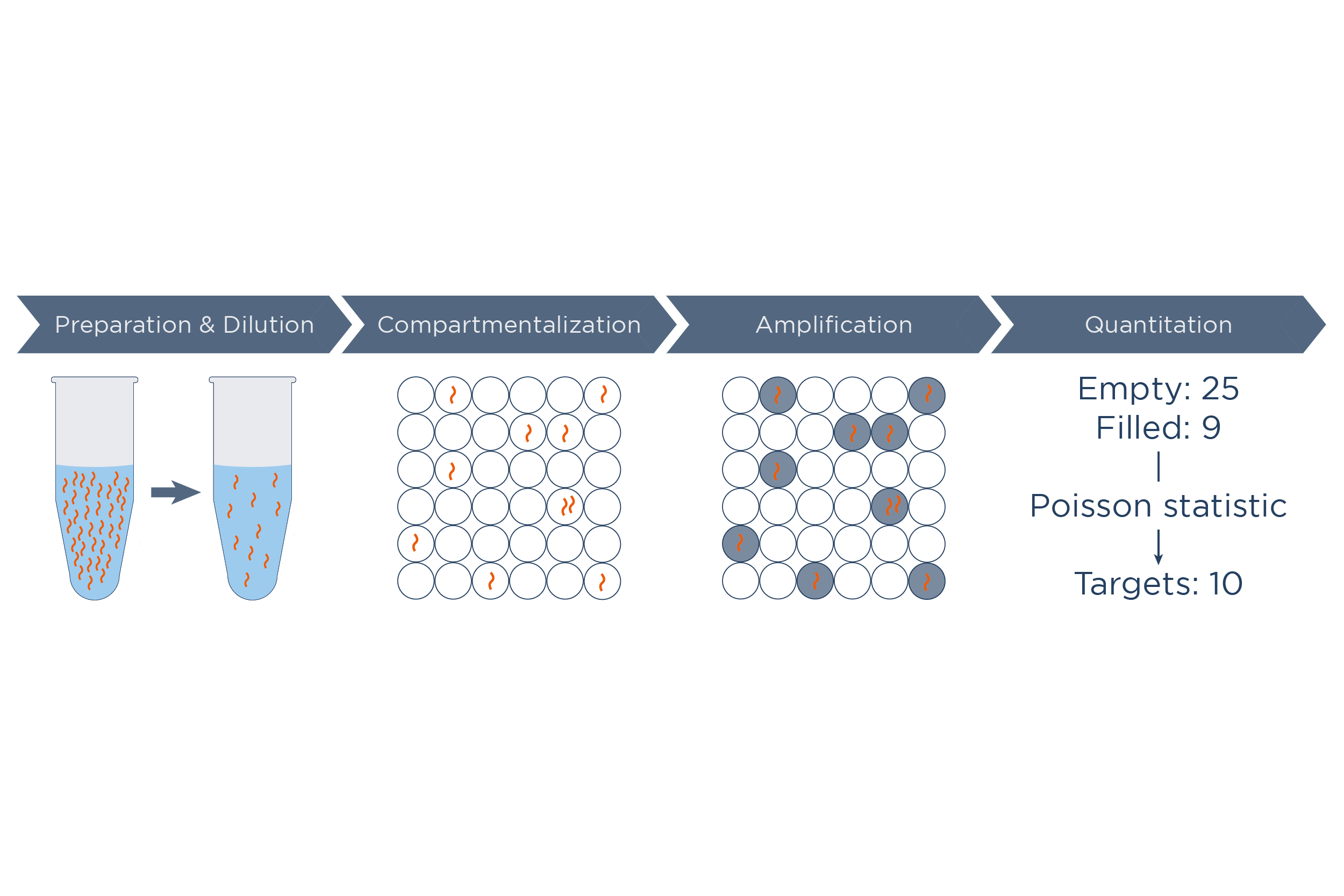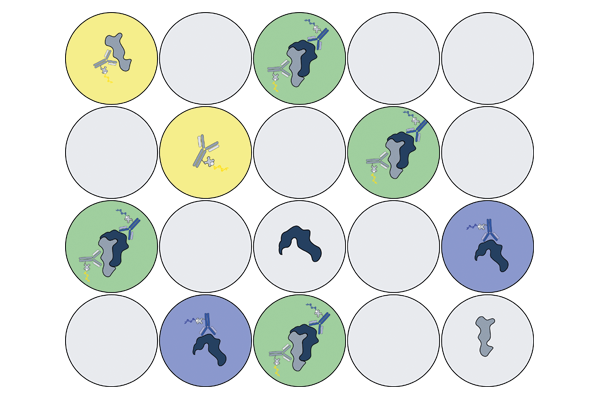PICO & Digtal PCR
Digital PCR (dPCR) is a technique used to accurately quantify DNA or RNA targets by partitioning samples into many individual reactions, each with a low number of target molecules. This allows for precise and absolute quantification of targets without the need of a standard curve.
Digital PCR explained

The partitioning process is often accomplished using droplet-based or chip-based compartmentalization methods. As a result of the partitioning, some reactions will contain no target molecules, some will contain a single target molecule, and others will contain multiple target molecules. This stochastic distribution follows Poisson statistics, allowing for precise quantification of targets without the need for a standard curve.
The advantages of digital PCR
- Improved sensitivity: Digital PCR can detect and quantify nucleic acid targets at extremely low levels, often as low as a single molecule.
- Increased precision: By partitioning samples into many individual reactions, dPCR can provide a high level of precision, resulting in low measurement variability.
- Greater accuracy: dPCR can eliminate the effects of PCR inhibitors, reducing the likelihood of false negatives and increasing the accuracy of results.
- Absolute quantification: dPCR provides absolute quantification of target molecules, eliminating the need for a standard curve.
- Multiplexing capability: Multiplexing can be achieved by partitioning different target molecules into separate reactions, allowing for the simultaneous detection of multiple targets in a single sample.
How dPCR is used in PICO
The PICO technology utilizes dPCR as a readout, enabling the absolute quantification of proteins, protein interactions and post-translational modifications with ultra-high sensitivity and accuracy. This breakthrough technology provides significant advantages for protein analysis, including the ability to detect low-abundance proteins and accurately measure protein concentrations across a wide dynamic range.
How does this apply to PICO and the detection of proteins?
The advantages of digital PCR, such as its increased sensitivity and accuracy, are leveraged in PICO by labeling antibodies with DNA labels to make them detectable in the dPCR. With PICO, always a pair of antibodies against a target is used, providing a pair-wise readout of the fluorescent signal generated by probes binding to the DNA labels attached to the antibodies.
By applying Poisson statistics, which is done by our analysis software AMULATOR, we can calculate back the target amount, without the need of washing away unbound antibodies.
